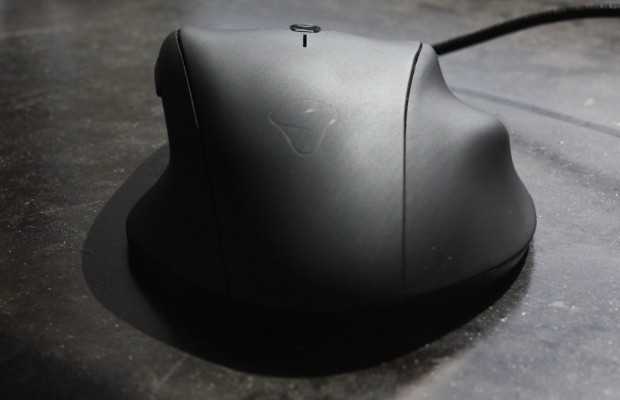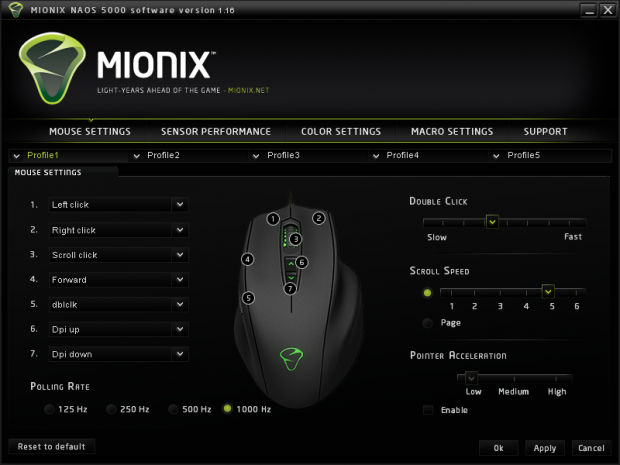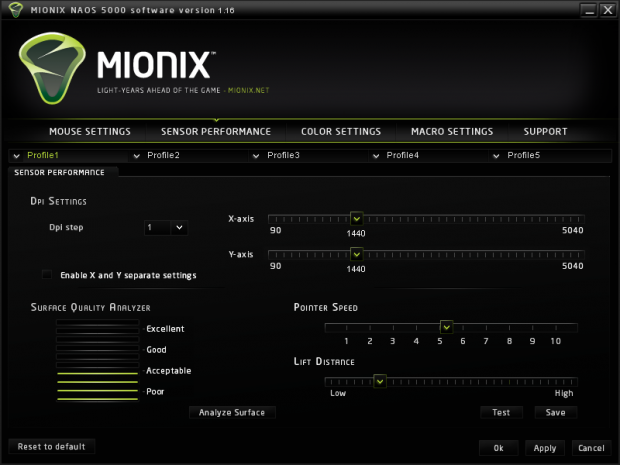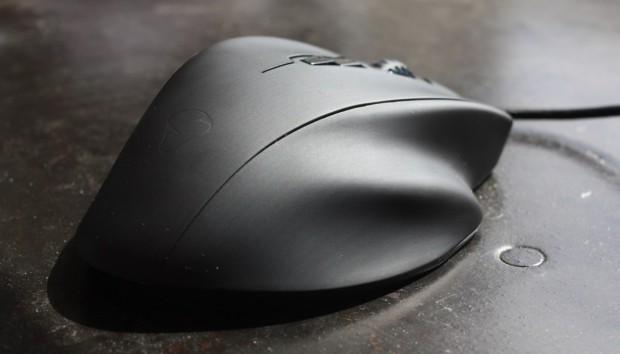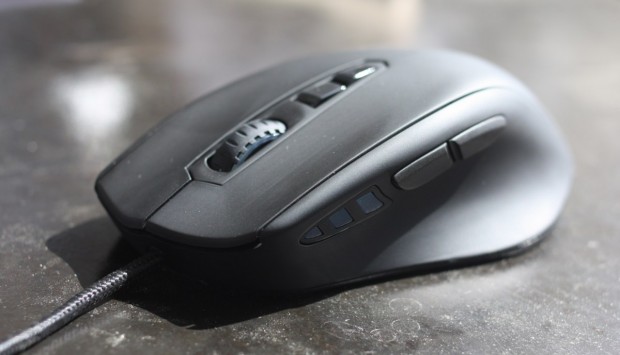
Short version: There’s lots to like, but not much unique, about this mouse from relative newcomer Mionix. And if it can’t beat the others on price…
Features:
- Ergonomic right-handed design
- 5040 DPI laser sensor
- 7 buttons
- On-board profiles and macro settings
- MSRP: ~$90
Pros:
- Comfortable shape
- Excellent configuration software
- Tracking is solid
Cons:
- Trackwheel seems a little stiff
- Doesn’t really offer anything other mice don’t
Full review:
It’s not hard to find a good gaming mouse these days. Microsoft, Razer, Logitech, and quite a few smaller companies all have compelling products, and it’s difficult to recommend one over the other since what fits your hand is very much a matter of personal preference. It’s amazing what tiny differences can do for usability. For example, when I was contacted about reviewing this Naos 5000, I immediately thought, “Wow, that looks exactly like the Cyber Snipa.” I mean, not exactly, but the layout and shape is very similar. But despite the close similarity, I found the Naos 5000 far more comfortable, and it’s hard to say exactly why.
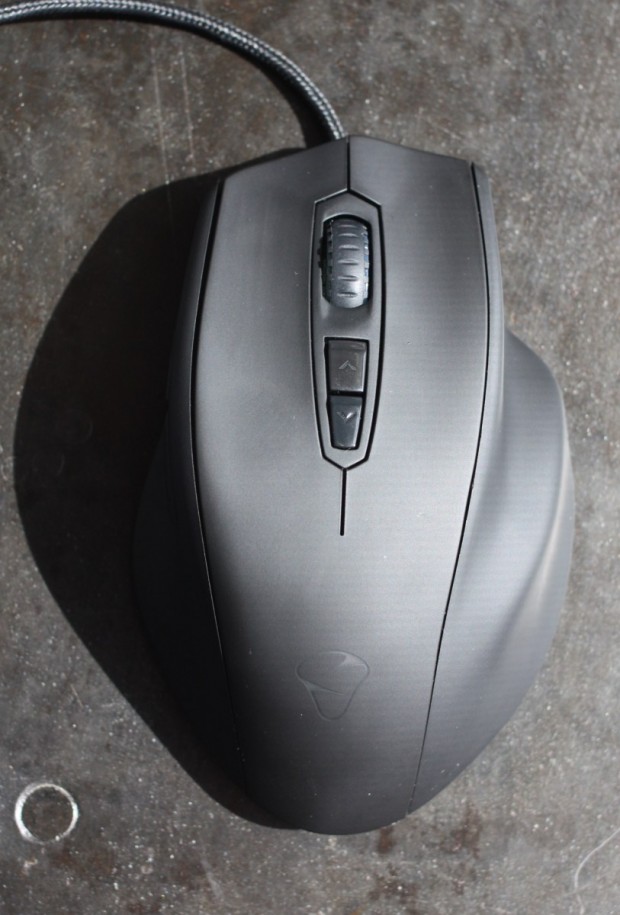 The shape is aggressively molded for a right-handed person, and there are separate shelves or ripples in the mold for your thumb, ring finger, and pinky. I have medium-sized hands and I found that the Naos 5000 fit almost exactly, though of course your mileage may vary. The placement of the thumb buttons is good; your thumb rests on the shelf immediately below, but has quick access to the buttons with only a slight movement. The main buttons are very sensitive and clicky — almost too much so, since I found myself often right clicking on accident because of the way my hand’s weight rested. The DPI up and down buttons are easily reached as well, and can of course be reprogrammed to something else if you’re not a sensitivity tweaker like me.
The shape is aggressively molded for a right-handed person, and there are separate shelves or ripples in the mold for your thumb, ring finger, and pinky. I have medium-sized hands and I found that the Naos 5000 fit almost exactly, though of course your mileage may vary. The placement of the thumb buttons is good; your thumb rests on the shelf immediately below, but has quick access to the buttons with only a slight movement. The main buttons are very sensitive and clicky — almost too much so, since I found myself often right clicking on accident because of the way my hand’s weight rested. The DPI up and down buttons are easily reached as well, and can of course be reprogrammed to something else if you’re not a sensitivity tweaker like me.
My only issue was really with the scroll wheel, which has a stiff, notched feel to its rotation that feels like coarse vibration when you’re scrolling up and down any distance. I actually started having to scroll with my middle finger instead of my index because it felt like it was going to vibrate my fingernail right off if I kept on the way I was going. Loosen up, guys.
The configuration software, while technically “optional,” was a joy to use. It’s attractive and effective, though it takes forever to apply changes. You can create several profiles, something I never have had a use for, but some no doubt like it, and it keeps the information on the on-board memory. This is handy when you have multiple gaming systems or switch between multiple mice, as I do.
Tracking was good, though it depended a lot on the surface. My cloth mousepad gave the Naos trouble with small movements, but my steel desk and hard mousepad had no problems at all. The drivers include a surface analysis tool that tells you how reliable the mouse’s signal is. I got by with “acceptable” but you don’t have to.
Conclusion
Well, what we have here is a perfectly nice mouse with a great feature set, but which nonetheless doesn’t really offer anything new. To compound the problem, it costs $90 at the moment. I simply can’t recommend it at that price, since you can get a Death Adder, G500, or Sidewinder for far less, which all perform as well. If Mionix can get the price down, I think they have a good chance at making some serious sales against the big guys, but right now it’s just too expensive.
